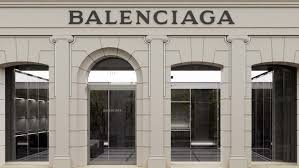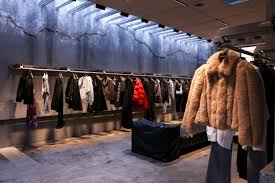The storied history of avant-garde Balenciaga and eternal elegance speaks much about its revolutionary spirit. First founded in San Sebastián, Spain by Spanish designer Cristóbal Balenciaga back in 1919, it quickly earned acclaim for its innovations and mastery. From a renowned haute couture atelier that defined style without boundaries, over the decades Balenciaga went on to transcend into a globally recognized powerhouse brand.
The Early Years
Cristóbal Balenciaga was born in 1895 in the Basque region of Spain, a place that deeply influenced his aesthetic. Born into a relatively poor family, his mother worked as a seamstress, and it was through her that he developed an early interest in fashion. Recognizing his extraordinary talent, a local noblewoman became his patron, enabling him to study tailoring and perfect his craft.
In 1919, Balenciaga opened his first boutique in San Sebastián, the fashionable seaside town visited by Spanish royalty and aristocracy. His designs were so far removed from anything that was then fashionable: clean lines, innovative cuts, an impeccable understanding of fabric and form. His early success was because he could put traditional Spanish elements into a modern context, so that his creations were highly coveted by the elite. By the 1930s he had expanded to Madrid and Barcelona establishing himself as a leading couturier in Spain.
The outbreak of the Spanish Civil War, late 1930s put Balenciaga out of operation, and shut down his salons. So, in 1937 he opened his homonymous fashion house on Avenue George V, entering a new part of his activity.

The Golden Era of Parisian Couture
Paris in the mid-20th century was the epicenter of fashion, and Balenciaga quickly rose to prominence among the city’s elite designers. His first Parisian collection debuted to critical acclaim, with fashion critics praising his ability to fuse technical precision with artistic flair. Over the next three decades, Balenciaga’s innovative designs would revolutionize the fashion industry.
The silhouettes of Balenciaga that introduced something groundbreaking for the traditional idea of womanliness during the 1940s and 1950s have not only had an influence but have been redefined over the years. In terms of simplicity and minimalism, the focus on a structural simplicity without ornate detail-making in designs like the tunic dress, balloon jacket, and sack dress contrasts the heavy ornateness of the cinched-waist style. His works often include bold sculptural shapes with luxurious fabrics that create both avant-garde and timeless pieces.
Beyond his collections, Balenciaga had an influence on others. He trained and mentored several of the more renowned designers, including Hubert de Givenchy and André Courrèges, shaping the future of haute couture. His peers looked up to him in reverence, and Christian Dior famously described him as “the master of us all.”

The End of the Original House
Despite his huge success and unmatched reputation, Balenciaga decided to shut down his fashion house in 1968. He was strongly disillusioned by the growing focus of the fashion industry on commerce and mass production, which, he believed, undermined the creativity of haute couture. He withdrew from the public view following his retirement, living a reclusive life in Spain, where he eventually died in 1972.
Though the house of Balenciaga had long since closed its doors, Cristóbal’s mark on fashion would never be forgotten. His work inspired generations to come, and his perfection in craftsmanship was unmatched by most.
The Revival and Modern Era
The brand, under new owners in 1986, after more than twenty years since the shut down of its house, gained back strength until the Balenciaga brand becomes one of the topmost powerhouses around the world, because of innovative leaders in its industry, and was made by various creative visionaries who revised for modern use.
One of the key figures behind modernizing Balenciaga was Nicolas Ghesquière, creative director of the brand from 1997 to 2012. His futuristic aesthetic and architectural precision brought back the innovative spirit of Cristóbal in his designs, as he also came up with such iconic pieces as the motorcycle jacket and the Lariat bag, which are considered instant classics.
Demna Gvasalia became creative director in 2015, infusing the brand with a bold, streetwear-inspired vision. Under Gvasalia, Balenciaga has adopted oversized silhouettes, deconstructed tailoring, and provocative marketing campaigns. The brand’s collaborations and unconventional designs, such as the Triple S sneakers and Hourglass bags, have attracted a younger, global audience.
The Legacy of Cristóbal Balenciaga
For generations, Balenciaga has characterized innovation with tradition. Cristóbal Balenciaga’s excellence in precision and craftsmanship, alongside the art of fashion, stays at the center of the identity of the house. His inventive approaches, such as the seamless connection between fabric and structure, were the precursors to modern trends.
The house has managed to stay relevant through its ability to push boundaries. From the rebirth of couture in the mid-20th century to embracing modernity in the 21st, Balenciaga has never lagged behind the curve. It is this sustainability and innovation that have seen it remain relevant within the fashion industry.

Conclusion
The Balenciaga saga from a small boutique in San Sebastián to the worldwide fashion empire speaks to the visionary ability of the founder and creativity of those who came after him. Whether it is the revolutionary designs of Cristóbal or the bold experiments of modern creative directors, Balenciaga has been a beacon of artistic excellence and innovation. And the brand continues to evolve, honoring its storied past while forging a dynamic future, ensuring that for generations to come, it stays at the very forefront of the fashion world.
